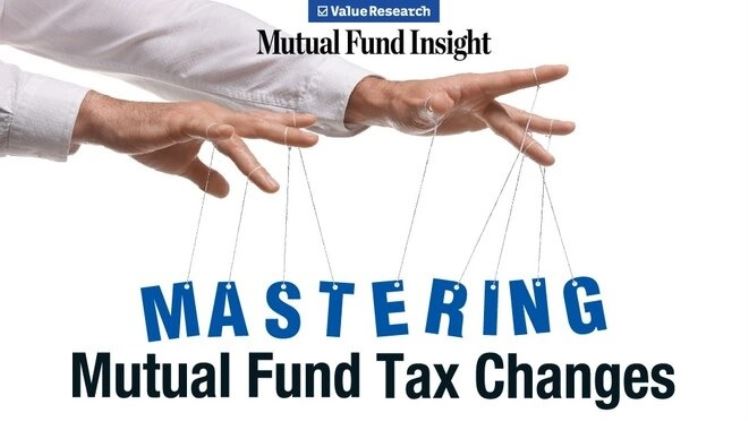Navigating the Tax Landscape: Recent Changes Impacting Mutual Fund Investments

The Tax Saver Mutual Funds, recognized as Equity Linked Savings Schemes (ELSS) in investment strategies, present a compelling avenue that integrates the dual advantages of tax savings and wealth generation.
These funds, predominantly allocated to the equity markets, furnish investors with an avenue not only to optimize tax liabilities under Section 80C of the Income Tax Act but also to partake in the potential prosperity of the stock market. Imposing a mandatory lock-in period of three years, Tax Saver Mutual Funds offer a distinctive amalgamation of tax efficiency and a relatively concise commitment period compared to alternative tax-saving instruments.
What are tax-saving mutual funds?
They represent a category of mutual funds designed to provide investors with the dual advantages of tax savings and wealth creation. These funds predominantly channel their investments into the equity markets and come with a lock-in duration, typically three years.
Contributions made to tax-saver mutual funds qualify for tax deductions under Section 80C of the Income Tax Act, subject to specific limits.
Attributes of tax-saver mutual funds encompass:
-
Tax Advantages
Investments made in best-performing mutual funds render eligibility for deductions from taxable income under Section 80C, with a maximum limit.
-
Equity Exposure
These funds majorly allocate their investments to equities, offering investors the potential for long-term capital appreciation. However, it is crucial to recognize that the equity market entails risks, and returns are not guaranteed.
-
Diversification
Fund managers strategically diversify the fund’s portfolio across various sectors and stocks to effectively manage risk and optimize the potential for returns.
-
Systematic Investment
Investors can systematically invest through SIPs (Systematic Investment Plans), leveraging rupee-cost averaging and promoting disciplined investing.
-
Lump Sum Investments
Investors also have the flexibility to make lump sum investments in these funds, allowing them to capitalize on favorable market conditions.
-
Lock-in Period
Tax-saver mutual funds impose a mandatory lock-in period of three years. During this duration, investors are restricted from redeeming or withdrawing their funds. This lock-in period is relatively shorter compared to many other tax-saving instruments.
Recent changes impacting mutual fund investments
-
Debt Mutual Fund Taxation
Commencing from April 1, 2023, investments in debt mutual funds will be subject to short-term capital gains tax rates, impacting returns and influencing investment strategies.
-
Equity-Linked Saving Schemes (ELSS)
Introduced in May 2022, these tax-saving mutual funds with passive strategies now feature a lock-in period of 3 years, presenting a fresh choice for tax-saving investments.
-
Focusing on ESG (Environmental, Social, and Governance) Investing
Rising sustainability awareness has fueled the demand for ESG-focused mutual funds, encouraging responsible investment practices.
-
Enhanced Regulatory Oversight
Stricter regulations implemented by SEBI aim to improve transparency and safeguard investor interests within the mutual fund industry.
-
Digital Platforms and Automation
Online platforms and robo-advisors are streamlining access and automating investment management, offering a simplified investing experience for tech-savvy individuals.
Which are the top-performing mutual funds?
Choose the best performing mutual fund today from the list given below:
-
Quant small cap fund- Growth option- Direct fund
Capital appreciation by investing in a well-diversified portfolio of small-cap companies.
-
Aditya Birla Sun Life medium-term plan- Growth- Direct plan
Generate income and capital appreciation by investing in a mix of debt and equity instruments focusing on mid-cap companies.
-
Quant multi-asset fund- Growth option- Direct plan
Suitable for investors seeking diversification and capital growth with a moderate risk tolerance and a long-term investment horizon (5+ years).
-
Quant tax plan- growth option- direct plan
Generates long-term capital appreciation while offering tax benefits under Section 80C of the Income Tax Act.
Which is the best app to invest in mutual funds?
The Bajaj Finserv app is a user-friendly platform for investing in and managing best-performing mutual funds, offering a range of features to enhance the investment experience. Notable aspects include an extensive array of mutual funds, surpassing 900 options across diverse categories such as equity, debt, hybrid, tax-saver, and thematic funds.
The app provides sophisticated fund comparison tools, enabling users to assess and contrast funds based on performance metrics, risk profiles, expense ratios, and other critical parameters.
To sum up
Tax Saver Mutual Funds emerge as a dynamic and strategic investment selection for individuals seeking equilibrium between tax optimization and creating long-term wealth. Their distinctive attributes, encompassing tax benefits, equity exposure, and systematic investment options, render them a versatile instrument in financial planning.